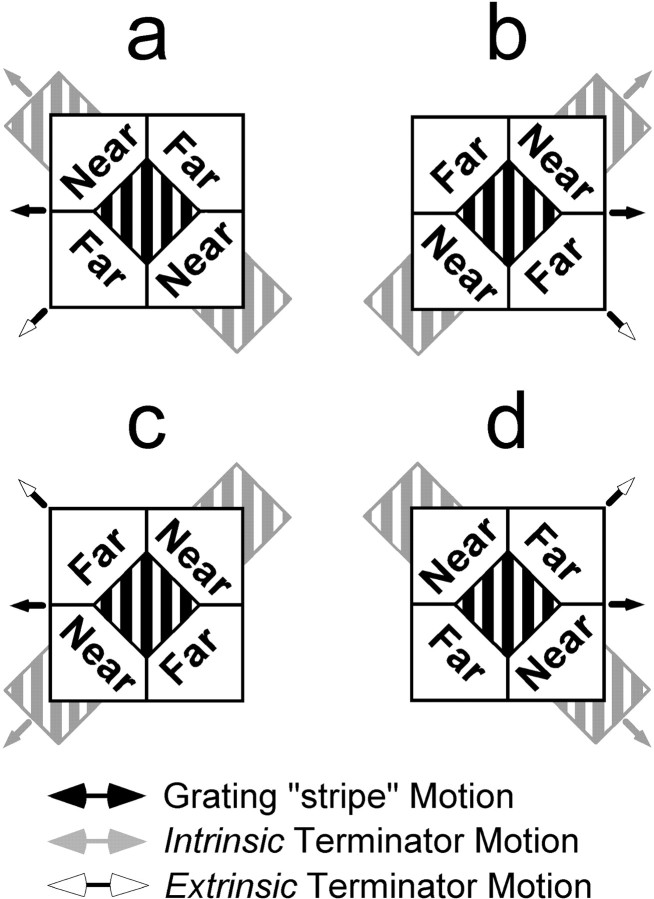Fig. 1.
Barber-diamond stimuli were used to study the influence of context on perceived motion and its neuronal correlates (a demonstration can be seen at http://www.cnl.salk.edu/∼gene/). These stimuli consisted of a moving square-wave grating framed by a static, diamond-shaped aperture. The grating itself was placed in the plane of ocular fixation while four textured panels that defined the aperture were independently positioned in depth using binocular disparity cues.Near and Far identify the depth ordering of the textured panels relative to the plane of the grating. Direction of grating motion is indicated by a black arrow. Four stimulus conditions were used (a, b,c, and d). The stimulus conditions were created by the conjunction of two directions of grating motion (leftward, a and c; rightward,b and d) and two depth-ordering configurations (1, a and d; 2,b and c). The line terminators between the perceptually near surface and the grating are classified as extrinsic features resulting from occlusion, and the grating appears to lie occluded behind the near surface (gray). (Note that gray stripes are not part of the stimulus and are used solely to illustrate perceptual completion of the partially occluded grating. Additionally, amodal completion is only one of several ways that depth-ordering cues could affect motion interpretation. See Discussion.) As a result of this manipulation, observers typically perceive the grating as belonging to a surface sliding behind the near regions and across the far regions (direction indicated by gray arrows). This direction is identified with motions of intrinsic terminators. White arrows, on the other hand, indicate the motions of extrinsic terminators.

